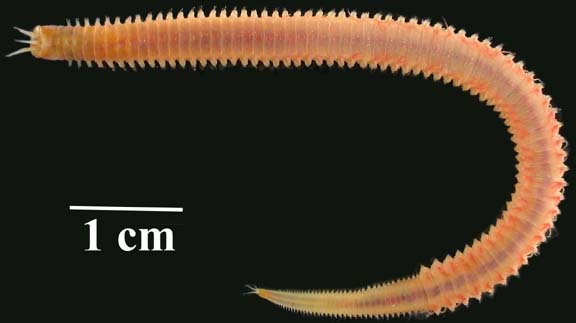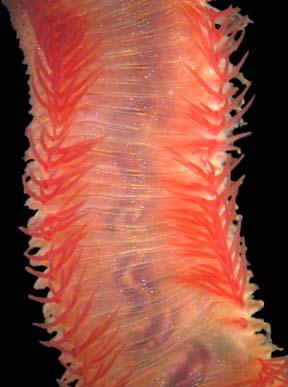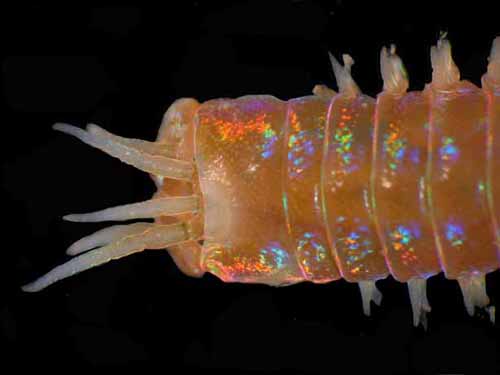Marphysa sanguinea (Montagu, 1815)
This eunicid polychaete worm has a cosmopolitan distribution, meaning that populations occur in a number of marine environments around the world. It is possible that this taxon may consist of a number of cryptic (morphologically difficult to distinguish) species, that are currently grouped together due to their physical similarities as Marphysa sanguinea.
Large populations of this animal have been documented in San Francisco Bay since 1969, likely as a result of an introduction through means of ballast water dumping or through the activities of the commercial oyster industry (Cohen and Carlton 1995). Today we regularly find this animal in mussel clumps of dock fouling communities in marinas lining the shores of the South Bay.
These large and often iridescent polychaetes can attain lengths of up to 250 mm. They are most easily recognized by the placement of five wrinkled occipital tentacles along the dorsal-frontal margin of the prostomium (head region). Two eyes are visible at the base of two of these tentacles in the last image below. The bright red palmate branchiae are visible in the third image as hand-like projections from dorsal surfaces of the parapodia along the middle region of the worm's body.
Species of Marphysa have been found to be carnivorous, herbivorous, or omnivorous. During reproduction, and contrary to what occurs in many eunicids, no swarming behavior takes place. Instead the animal will form gelatinous egg masses from which pelagic larvae emerge, then soon settle to a benthic lifestyle.
Within
the family Eunicidae, M. sanguinea is closely related to the famous
palolo worms which are harvested by South Pacific islanders for food during
the worm's swarming breeding activity.




